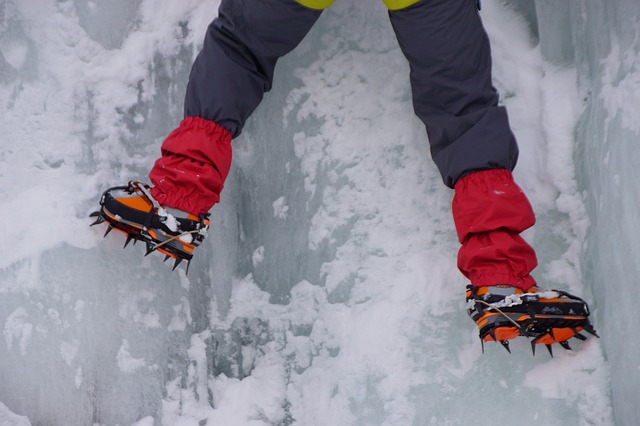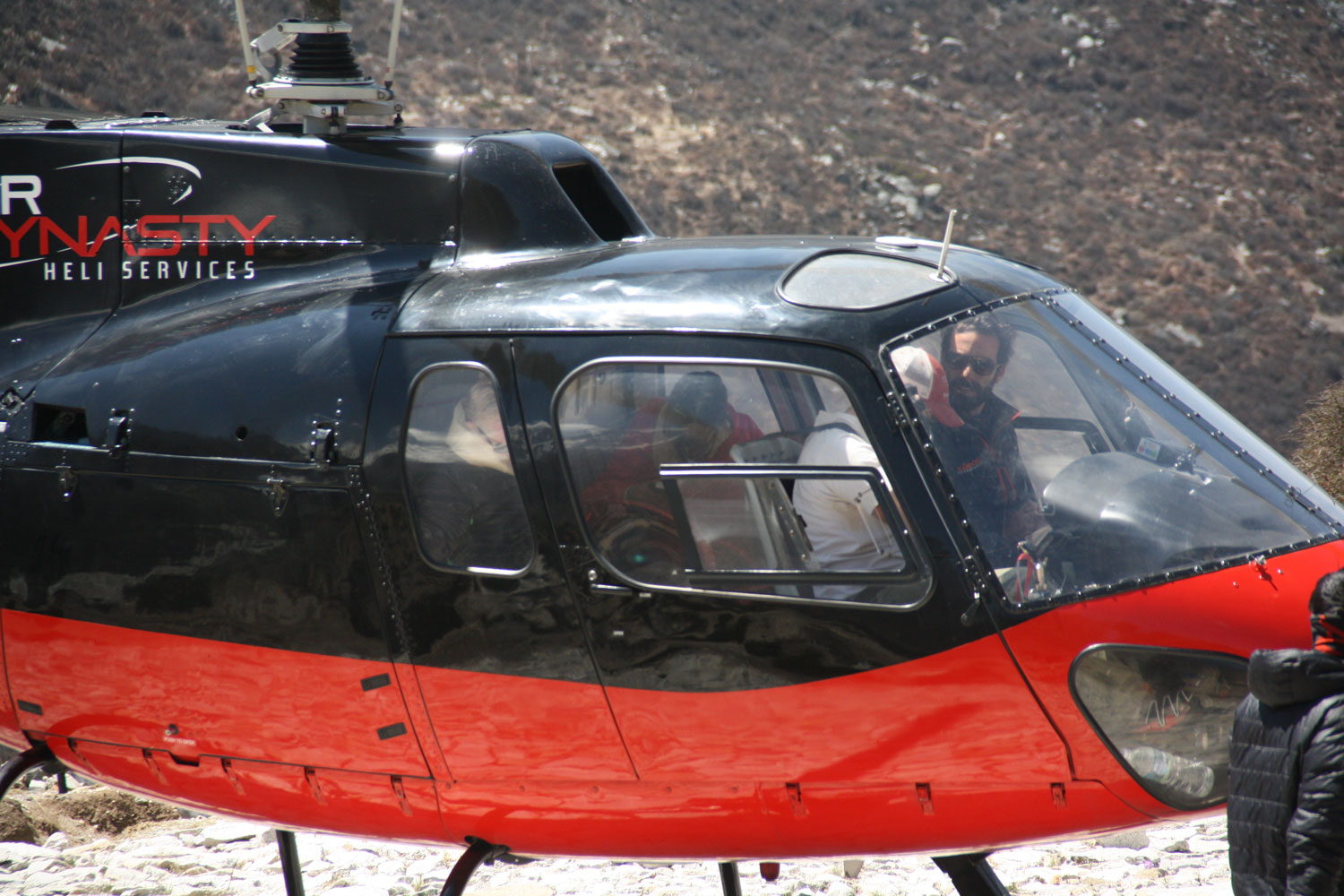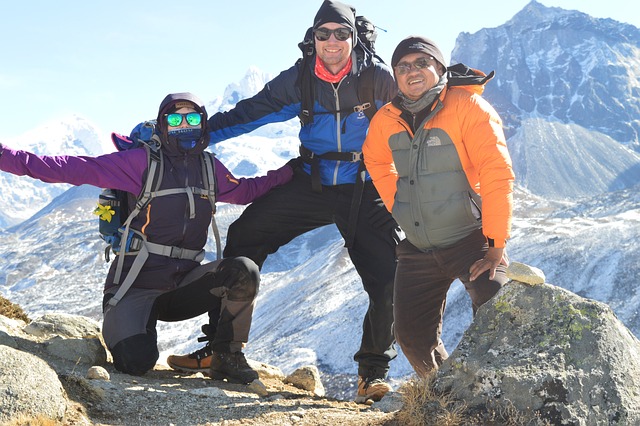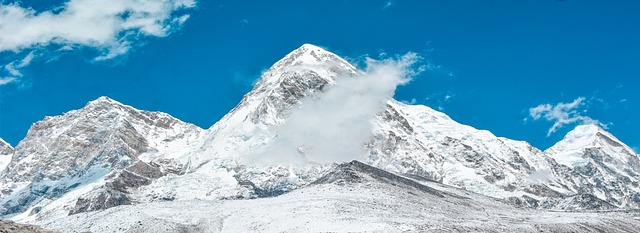In the 21st century, reaching the highest peak in the world is no-longer reserved for hardcore climbers. In the last few decades, modern equipment and a booming mountaineering industry has opened up the Himalayan peaks for mountaineers from around the globe. Before you start packing, you might be wondering how much does It cost to climb Mount Everest?
Although popular, climbing Everest is no easy feat and this is reflected in the price.
Depending on which guide company you use, a Mount Everest expedition will cost you anywhere from $30,000 to $100,000.
In the sections below, I’ll break down the cost to climb Mount Everest by component. This will give you a rough idea of the cost to plan your own expedition and also help you understand why guide companies hit you with such a hefty price tag.
Average Cost To Climb Everest
When planning your Mt Everest Climb, there are a few options for expedition style. Most people use a mountaineering agency (either Nepali or International) to arrange all the logistics. You could also take the 'purist' approach and organize your own expedition.
Below I outline the different climbing options and approximate prices.
Sherpa Supported Tours With Local Operators
This type of expedition option does not include a guide. It does however include logistics, group gear, transport, food, and (usually) permits. On a Sherpa-supported climb, the lead Sherpa will go with you to the summit but you will be ultimately responsible for decisions and safety along the way.
This option is only suitable for experienced mountaineers or groups who are bringing their own experienced guide. There is also no guarantee that the Sherpas speak good English.
Sherpa Supported climbs cost from $30,000 per person.
Full Board Everest Climbs (with local operators)
These types of expeditions are usually with a registered guide or lead Sherpa. Sherpas from Nepali companies often have equal, if not more experience than Western guides. Guided expedition prices usually cover all logistics including food, sherpas, oxygen, group gear, admin fees and permits.
You will be led by an experienced Sherpa/guide who speaks good English. The guide will take responsibility for the climb and act as a leader to the group. They will handle summit decisions and safety aspects.
Expect to pay between $45,000- $50,000 per person
Note: Cheaper tours take bigger groups and split them into smaller parties for summiting. This may mean you have less chance of a successful summit as you will need to rely on good weather on your group’s allocated day.
Guided Everest Expeditions With International Agencies
International companies used to dominate the market of Nepal summit treks. Today, international companies have stiff competition from Nepali agencies. There are still some very well-established agencies operating from New Zealand, Germany, America, Argentina and the UK (amongst other countries).
The International agencies generally set themselves apart by limiting expeditions to smaller groups of around 10 people (sometimes a little bigger). Keeping the numbers low means the entire group can summit at the same time. This gives a few opportunities for summit days and optimal weather.
Some perks of higher-end companies include more comfortable accommodation and better meals. Some agencies provide WIFI in camps and an assigned medical doctor.
Expect to pay at least $50,000 pp for international outfitters that employ the services of local guides. If you are wanting to go with a western/non-Nepali mountaineering guide, you will need to shell out about $20,000 extra in guide fees.
Can You Climb Everest Without A Trekking Company?
Technically, you can climb Everest without joining a commercial expedition but it’s not recommended unless you are a professional mountaineer with significant 8000er experience. For the average Everest client, climbing without the support of a reputable company is extremely risky. Moreover, sorting out your own logistics can be a nightmare. You will have to consider things like hiring Sherpas, buying supplies, oxygen, gear etc. More on this below.
Cost To Climb Mt Everest?
Here's a breakdown of the main expenses.
Everest Climb Permit Cost + Overheads
A Nepal permit to climb Mount Everest currently costs around $11,000 pp. Permits are issued at a price of $70,000 for groups of 7-10 people. If you did for some reason want to purchase an individual permit, this will cost you $25,000.
A permit grants climbers legal permission to be on the mountain and provides assurance for rescue in emergency situations. Also, should you reach the summit, you will receive an official certificate from the Government of Nepal.
But hold on, there are some other admin fees to consider…
Nepal government requires that a local operator organize your permit. This comes with a $2,500 fee plus a $4000 waste fee (which is refundable). You will also be paying a Liaison officer around $3000 per team. These officers are there to assist with climber communication, provide weather info and to enforce the strict rules about climbing Everest.
The above fees are usually included in the price when you book through a Nepali company. If not, you will need to have around $20,000 available before you even look at hiring a team and buying supplies.
Note: From the Tibet/Chinese side, Mt Everest permits are slightly more expensive between $15,000-$18,000 per person. This includes transport to base camp, yaks in and out, and all the associated admin fees.
Sherpas, Cooks And Supplies
Good climbing agencies keep the Sherpa-to-client ratio 1:1. Often extra Sherpas are needed as a backup at the high camps or to carry extra equipment.
Sherpa wages are in the realm of $5000 per Sherpa, per trip. If you want to privately hire a certified lead Sherpa, you will need to budget about $10,000. Cooks and helpers will cost an additional $5000 (a shared cost for the group).
If you are budgeting for your own food and fuel supplies, it will cost around $700-$1000 per person for a 6-week expedition.
Gear Costs For Climbing Everest

Even if you are climbing with a company, you will need your own alpine gear. This needs to be quality stuff especially designed for climbing in high-altitude environments. Some essential pieces include;
- Alpine climbing boots
- Thermal layers
- Sleeping bag suitable for temperatures below -20℃
- Full down suit
- Crampons
- Climbing gear (harness etc.)
Buying this gear new will cost upwards of $5000. You can bring down the cost slightly by buying or borrowing secondhand equipment. Outdoor gear shops in Kathmandu sell used but good-quality Everest gear. You should however bring the basics, particularly your own boots.
Oxygen bottles cost around $300 and climbers are required to carry 4-6 bottles per person, that's another $1800. On top of this, you will need an oxygen mask and regulator (about $800)
Climbing outfitter will generally provide tents, oxygen, masks, and regulators as well as all the staff’s equipment.
Insurance Costs For Climbing Everest

There are three important aspects of cover for climbing Everest; rescue evacuation, medical costs, and repatriation. At a minimum, companies will require that you have evacuation insurance. This can cost as little as $200pp - but will come with limitations. Adding medical cover will be a few more hundred dollars. Be sure you read the fine print and stick very strictly to the T&Cs or the cover will not pay out.
It’s pricey but, if you can afford it, it’s well worth adding trip cancellation cover. Full cover for all the aforementioned (rescue, medical, repatriation, and cancellation) will cost in the region of $3,000 - $10,000.
Other Considerations
Travel Costs
Flights into Nepal vary depending on where you are flying from. From Kathmandu, you will need to take an internal flight to Lukla, (approximately $200 with Tara Air) From here you can make your way to base camp. You could save money by taking a bus to Jiri and hiking to Lukla.
Trek To Base Camp (Food And Accommodation)
From Lukla, It’s an 11-12 days trek from Lukla to Everest base camp. You must factor in accommodation at Nepal tea houses and meals along the way. Rooms cost between $5-$15 dollars depending on whether or not meals are included. If you are not paying full-board, tea house meals cost about $5 -$10. This means it actually works out cheaper to include meals.
You can save some money by camping and cooking your own meals. If you want to camp and still buy meals from tea houses, you will be charged more than double the rate of staying guests.
As you will be carrying equipment for a summit attempt, you will likely need to employ the services of yaks ($40 per day) and Porters ($20 per day) for your journey to and from base camp. Plus, you will pay a park fee of $100 per group.
Generally, it will cost you between $600- $1000 (excluding flights) to get to EBC independently. Read more about the costs of trekking to Everest Base camp
Tips

As a rule of thumb, tips should be anything from 5%- 20% on top of wages. You should budget between $400-$3000 + per individual. Guides usually receive the lion’s share but don’t neglect the hard-working Sherpas, cooks, and assistants.
Of course, tipping is optional but it’s very much a part of Nepali tourism culture. Remember, your team is going to play a big role in keeping you safe and making your Everest summit dream a reality. They deserve some recognition above and beyond what’s basically a minimal wage.
Climb Mount Everest In Luxury
On the higher end of things, it’s possible to give your Everest climbing expedition a serious upgrade. Some companies offer add-ons including luxury hotel stays, private bathroom and dining quarters, helicopter flights to and from Everest base camp, personal doctor and extra oxygen. Oh yes, and a personal photographer for some above-average summit shots!
If this sounds like your style, prepare to pay upwards of $130,000.
Why Does It Cost So Much To Climb Mount Everest?
As you can see from above, there are ton of overheads that you need to factor into the price of climbing Mount Everest. If you made the summit years ago and are wondering how it’s possible that prices skyrocketed, there is a pretty reasonable explanation; it boils down to supply and demand.
Better Pay For Sherpas
Sherpas are getting paid better than in the old days. Recent years have seen a huge rise in the demand for Everest summit climbs. This has created jobs for hundreds of more sherpas. To combat the mistreatment of these Sherpas, there was a big push for a standardized and fair wage structure.
Nepal companies are offering packages that are competitive with international agencies. Today, an experienced lead Sherpa can earn just as much as a foreign guide (and usually have more summit experience). Of course, some cheap outfitters are still guilty of underpaying their staff.
Increasing Everest Permit Fees
As for the permit fees, these have continued to rise with the number of climbers on the mountain. The money from permit sales is supposed to be used by the Nepali and Tibetan governments to keep the mountain in pristine condition.
By all accounts, this has not gone very well and Everest is famous for its high level of pollution. Even so, there have been a few expeditions in previous years where groups of Sherpas were sent up to the ‘death zone’ with the goal of clearing trash. With so much public scrutiny on the issue, we can only hope the Nepali government will enforce stricter waste policies.
The Cheapest Way To Climb Everest
Honestly, there is no cheap way to climb Mount Everest and prices are only escalating by the year. If summiting the world’s highest mountain is your dream, best get going as soon as feasibly possible.
You can save a little money through careful planning. For instance, as you near base camp, things like batteries and toiletries get a whole lot more expensive. Make sure you stock up with essentials at home or in Kathmandu.
Finally, it’s worth noting that Nepali companies are always willing to wheel and deal. You can usually negotiate their prices down a bit. Just be wary, if you are paying less, chances are they are cutting costs somewhere.
You may also like our article on Mount Everest facts.


Are the other 8,000ers similarly expensive? If not, which is the cheapest to ascent?
Hi Joseph, climbing any of the 8000ers requires a serious expedition and comes with a steep cost. Everest is the most famous which means there are more options between trekking agencies. Even the ‘easier’ mountains like Cho Oyu cost upwards of $30,000.
Hope that’s helpful!